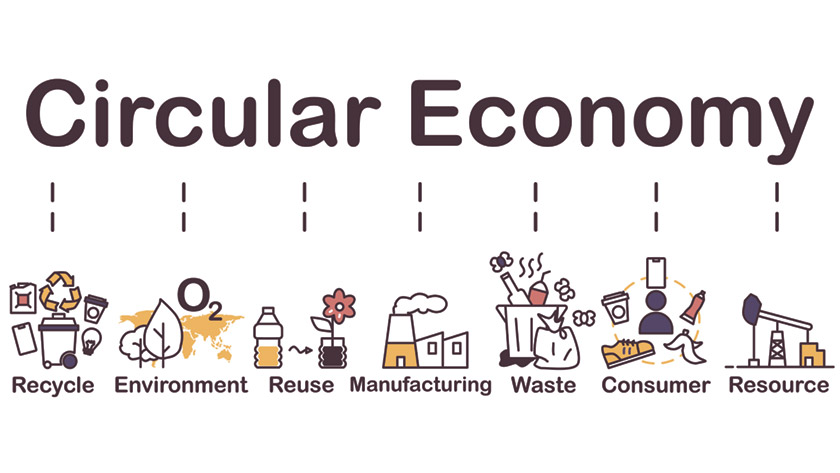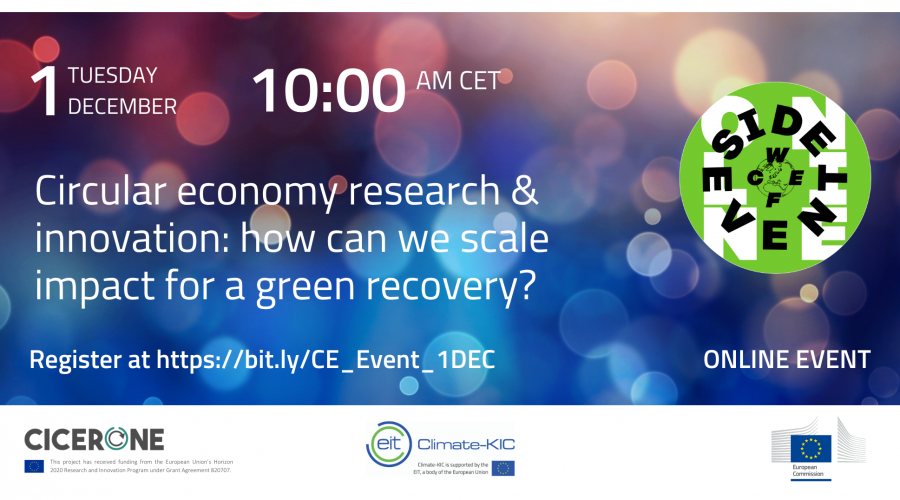This article first appeared on the European Commission’s success stories website.
New solutions are needed to make our economies more sustainable, and they are needed quickly. Research and innovation to support the transition can be funded more effectively, if the relevant programme owners develop synergies and learn from each other, say EU-funded researchers championing a coordinated approach.
The EU-funded CICERONE project is paving the way for closer cooperation among circular economy research and innovation programme owners (POs) – the various public authorities across Europe that are currently the main source of funding for projects in this area. Cooperation among these POs could take various forms, from exchanges of know-how to joint programming initiatives.
‘At the moment, joint programming is out of reach for most POs,’ says project coordinator Cliona Howie of lead project partner EIT Climate-KIC. ‘But the challenges we face do not respect regional or national boundaries. We need the ability to join forces and thereby realise the full potential of programming for greater impact.’
CICERONE is about to publish a strategic research and innovation agenda (SRIA) detailing priority areas for research and innovation funding to advance the circular economy, says Howie, commenting on project progress in March 2020. This document, which ties in with the European Green Deal and the European Commission’s Circular Economy Action Plan, addresses eight key themes – biomass, chemicals, construction and demolition, food, plastic, raw materials, waste, and water.
It also explores how these aspects combine in four challenge areas of particular relevance – namely, industrial systems, urban areas and value chains, as well as territory and sea, says CICERONE stakeholder engagement lead Laura Nolan, also of EIT Climate-KIC.
‘It was very important to us to make sure that the SRIA is aligned with what countries and regions have identified as specific challenges in their respective locations,’ she underlines. Input was gathered at events and through a vast online consultation. The SRIA is intended as an evolving, living document that will constitute a key reference for public authorities.
All together now
Research into the design of a dedicated structure to support and inform PO cooperation is also under way, according to Howie. Quite what shape this platform would take remains to be seen – an association, a secretariat, a public-private partnership? Concrete suggestions are to be put forward prior to the project’s final conference, which is due to take place early in 2021 (if the requested project extension is granted).
Whatever structure the partners may suggest for the prospective platform, the objective will be to empower programme owners by enabling them to interact, pool expertise and build momentum together.
‘Currently, approaches are fragmented, and there is not a lot of standard practice,’ Howie notes. ‘The platform will help to ensure that regional and national authorities across the EU have access to each other’s know-how and thereby enable them to leapfrog learning steps and directly benefit from insight saying here’s a good mechanism, here’s a good model, this is good practice in funding, and this is how you would implement it.’
This boost is what is needed to kickstart exponential accelerated transition for a paradigm shift, Howie emphasises.
Investing for impact
While public authorities currently provide the vast majority of research and innovation funding to advance the circular economy, strategic blended financing – funding that additionally includes contributions from the private sector – could provide added leverage.
‘And at the end of the day, business is the beneficiary of good circular economy programming,’ Howie adds. ‘One of the challenges right now is that circular business models are not getting financed, because the financial system is geared to the traditional linear business models.’
Current methods for calculating the associated financial risk for new ventures simply do not apply, she explains. Key considerations are not factored in – such as the long-term availability of the required resources, or the financial implications of the disposal of end-of-life products potentially becoming the manufacturer’s responsibility. Once the full value chain is considered, the question of risk emerges in a very different light, Howie says.
CICERONE strives to provide POs with the insight, the confidence and the alliances they need to help re-engineer the socio-economic system, as part of the much wider drive unfolding across Europe, says Howie. ‘We’re just another warrior out there in the field,’ she concludes.






